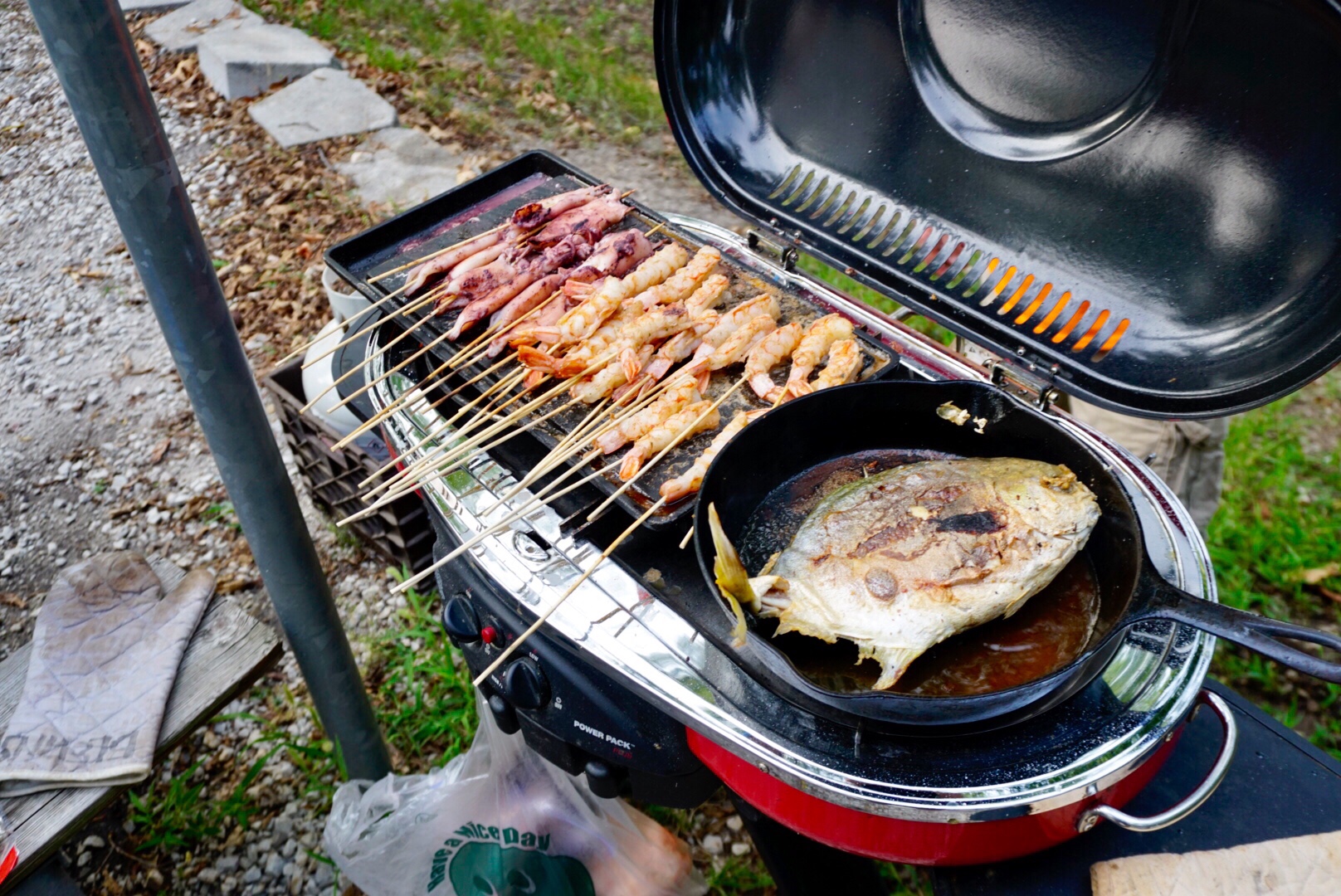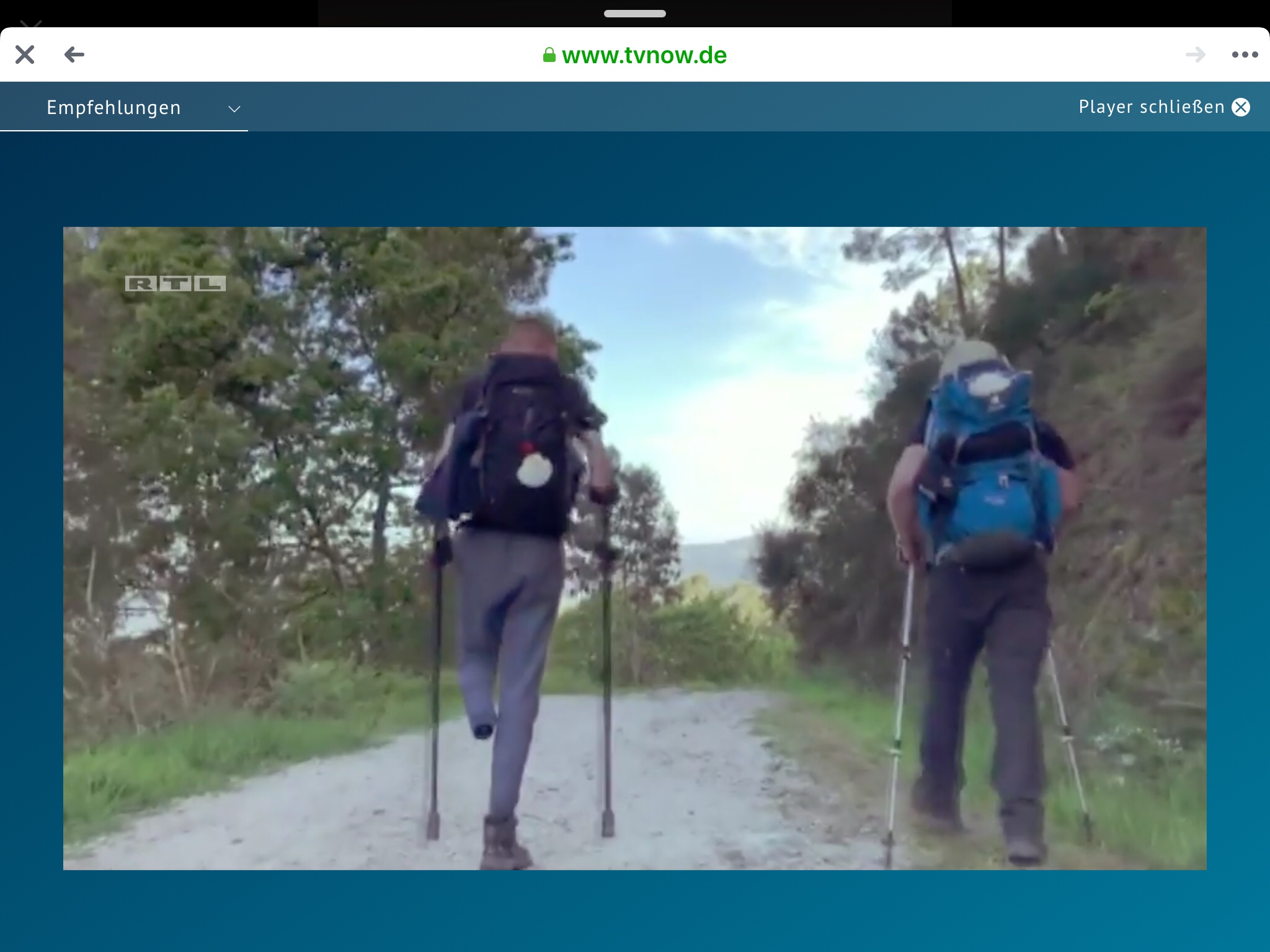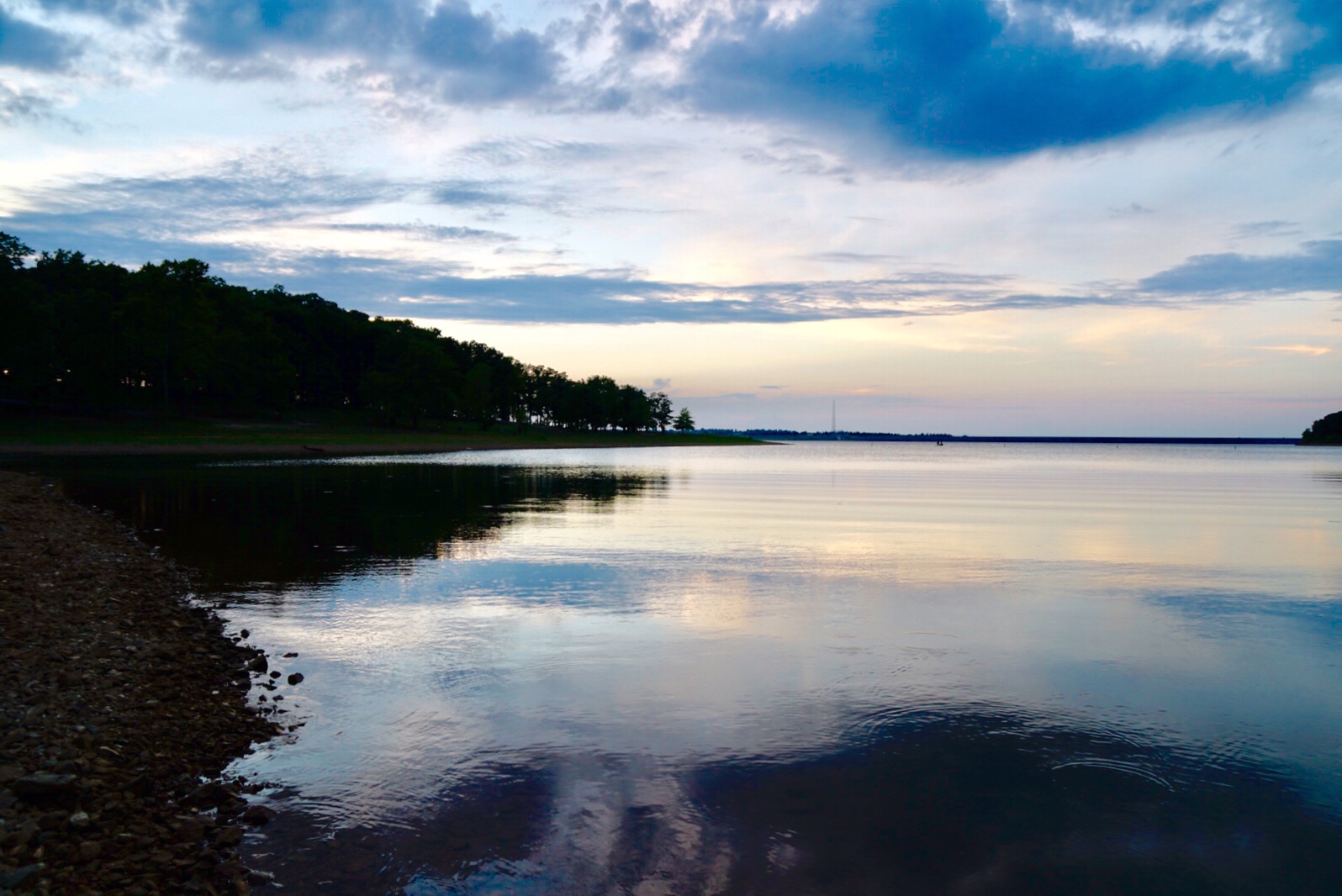
We are grateful for the contribution of so many people to our journey. I told Christine of my intention to name those we met and those who have followed us. She replied, “How are you going to do that? You would have to name everyone on Facebook plus everyone who has subscribed to your posts!” Of course, she is right. I launched my “Thoughts” posts in February 2018 in anticipation of the start of our travels in March. As of this writing there have been over 16,000 visits to my posts. I really can’t select individual “followers” of our journey without risking offense to others who I inadvertently omit to recognize. I trust that you know who you are, and most of all I hope that you know that you are loved by us and that we know who you are. Thank you so very much for your replies, “likes”, comments, and even just silently staying with us.
For those who became a part of our journey, I want to recognize you individually and express our love and appreciation. It is likely that I will forget to mention someone. I apologize in advance for any omissions:
Beginning March 24th, we were guests for 3 days in Puerto Rico of hotelier Eddie Ramirez and his wife. It turned out that he had walked the Portuguese Camino in 2016. He arranged for us to receive Pilgrim Credentials issued by the Asociaciόn de Amigos del Camino de Santiago de Puerto Rico for our Camino. We were reminded by Eddie that, “In life there are no coincidences.

From March 27th to April 10th we sailed aboard the Viking Sea from Puerto Rico to Barcelona Spain. We met many wonderful travelers and we were wrapped in the luxury of a voyage at its most elegant. This would be in stark contrast to the rest of our journey. Aboard we enjoyed the services of an extraordinary professional staff and we were entertained by very talented young people.

Our needs were meticulously attended to by Augistino and Noni, who were our cabin stewards from Indonesia.

Among the shipboard travelers that we met were Mary and Gary Oesterle from near my hometown in Illinois. We greatly enjoyed their company and we look forward to continuing our friendship into the future.

We arrived in Barcelona on April 10th and during our 3 days in that wonderful city we connected with Neus Santacana and her family. Neus had spent time with us in the 1990’s as a high school exchange student. We met her in Spain during our 2013 Camino and we were thrilled to see her again.

On April 13th we were in Madrid for 3 days. We received a text message from Ron and Lena Meck asking where we were. We first met them during our 2017 journey in Alaska. It turned out that they were also in Madrid! It made for a wonderful chance reunion that I am sure will be repeated in the future, where is to be decided. “In life there are no coincidences!”

On April 16th we traveled by night train from Madrid to Lisbon. In the dining/bar car we met a wonderful young couple, artist Morgane Xenos and restaurateur Jerome Bollom. They had known each other since childhood and it was in adulthood that they discovered that they loved each other. We talked of life from both sides of the mirror, sharing laughter seasoned with wine and olives. Later we would rejoin them in Lisbon. They are special people. We suspect that we will meet again.

On April 19th we toured the Cathedral in Porto. The briefest encounter with two young University of Porto students, Mafalda Lemos and Rita Nogueira, proved to be one of the sweetest and most memorable of our journey. They thought that we were Canadian because we had such big smiles! They had taken our picture and were selling memory booklets at the Cathedral. Understanding that we could not carry the booklet in our backpacks they took it upon themselves to personally package and mail the book to us in the States. They have followed us on Facebook every day since. We hope that they will visit us some day in Kansas City. The world is in good hands with young people such as these!

Our 11 walking days on the Portuguese Camino began on April 20th. Each day included pleasant and memorable encounters with “Hospitaleros” (folks who provide accommodations), wait staff, merchants, and of course Perigrinos (Pilgrims walking the Camino). All contributed to our experience, but some are worthy of special mention.
April 20th was our first day on the Camino and with it came friendship with Kirsti Sergejeff and Sirkka Vikman, two Perigrinas from Finland. We would see them on occasion throughout the Camino.

There was Dortha, an expat from Poland now a citizen of the US residing in Maryland where she is employed as a scientist. Her Camino was cut short by very serious foot blisters that required medical attention. I regret that our last exchange of “Buen Camino!” was a parting without a real prospect for continued communication.

There was Jim, a respiratory therapist from Maine. Jim was tall… how tall was Jim? Tall enough that his feet always hung out over the end of the beds on the Camino. We encountered Jim throughout the Camino as he pursued his search for a bed that fit.

The walk on April 21st brought an encounter with a troop of Portuguese Scouts. These boys and girls ran to us offering a free meal for us to carry with us. They were thrilled to be with us in a picture that I would post the next day on my website.

April 23rd was the day more dear friendships were created. We met and shared dinner with Irène Lässig and her sister Manuela Joseph, women from Switzerland. We shared the Camino with them over the course of a few days and felt a bond that was out of proportion to the time spent together. Irène reflected that perhaps such friendships had their start in another life.

The four of us went to dinner that evening at a charming restaurant near our lodgings in Balugães Portugal.

The owner of the restaurant, Edwardo, projected a strong sense of admiration for me as I sat at table with 3 lovely ladies. He declared me his “Amigo!” and brought me a snifter of his best house brandy, thereafter holding court at our table in Spanish that Irène could thankfully translate.

That same day we met 3 gentlemen from Germany at our lodging. One of them, Sven Münster later befriended Christine while she waited alone for me in Ponte de Lima Portugal. She had gone forward by taxi still recovering from a migraine that resulted from choking on a large insect that decided to fly down her throat. Our path pleasantly intersected with Sven’s throughout the rest of our journey on the Camino.

April 27th was the day that we met more German pilgrims, lots of them! They became the voice of the Camino for me, albeit in German. I pressed my resources from high school German class to the point that I found myself dreaming in the language! There was physician Reiner Vogt and his wife Ina Massing who manages a firm specializing in prosthetic limbs. Faris Abu-Naaj is an internet expert who would later lead a group of people struggling with obesity on a Camino pilgrimage. Stanislaw Mowinski, a German citizen originally from Poland, would stay in touch with us and rejoin us for an afternoon in Berlin.

Then on that day there was Grzegorz Polakiewicz. “Greg” spoke no German, but what made his friendship with all of us remarkable is that he was walking his second Camino with one leg and assisted only by his two crutches. Discussions at table, interpreted by “Stanley” resulted in arrangements for him to travel to Germany where Ina and Reiner would arrange for him to receive a prosthetic leg. I would have called this encounter an amazing coincidence, but I am reminded, “In life there are no coincidences!”


On April 30th a random comment to us from a Canadian couple turned into a nonstop conversation that seemed to transport us across 10 kilometers in the blink of an eye. Tom Shillington and his wife Nanci Burns were our doppelgängers from Ottawa Canada. Each topic revealed a new thing or experience that we had in common. It was uncanny. It is a friendship that extended through the end of the Camino and that we hope will endure long thereafter! (Tom, please see my “PS” at the end of these Acknowledgements.)

I don’t play the guitar and I don’t speak or for that matter sing in Spanish. Yet on May 4th in Santiago we were watching an evening performance outside of the Cathedral by a very talented Mariachi band. As I was videoing the performance one of the guitarists gave me a sly look. A few minutes later he grabbed my smartphone and thrust his guitar into my hands. Overcome by the “moment” I began my one (and probably only) stint as a Mariachi band member. The guitarist continued to video, capturing my “moment” about 2 minutes into the video. Christine laughed so hard that she almost passed out.
This is a link to that most memorable performance.

Our walk on the Camino ended on May 3rd and we departed Spain, bound for Ireland on May 6th. May 8th and we arrived in Waterford Ireland for our pre-planned meeting with longtime friends from Wales United Kingdom, Huw and Nina Thomas. It had been 11 years since we last embraced but the bonds of friendship melted away the years that parted us. We spent the next 5 days on a wonderful tour of Ireland with these dear friends.

Upon parting with Huw and Nina we continued our wanderings through Ireland and Northern Ireland, departing for Scotland by ferry on May 18th. Our next memorable encounter was with a most remarkable family in Glasgow Scotland. It was there in a restaurant that I was approached at the bar by Garry Clifford, his oldest son Sean, and their friend John Curran. After a brief conversation they treated us to drinks… for the rest of the evening! Garry’s wife Kathleen, Sean’s wife Julie, and John’s wife Carol completed this impromptu gathering of Scotland hospitality at its best. Within 24 hours we were all Facebook friends and the 6 of them have since followed our journey. We look forward to the day that Garry and Sean may stop in Kansas City as they pursue their dream to cross the USA on Harley Davidsons. Of course, we hope to welcome the rest of this wonderful crew into the hospitality of our home!


On May 20th we traveled by train to Fort William in Scotland’s northwest Highlands. Our host in an Airbnb adjoining her home was Shana. I mention her because she graciously met us in the rain upon our arrival at the train station and drove us to her home. She did our laundry, twice! She prepared a traditional Scottish breakfast for us on the day of our departure together with sandwiches for later in the day. We met her mother and her son. Her hospitality made us feel that we were much more than boarders.

We were in Edinburgh on May 28th when we had a prearranged meeting for lunch with “Mickey” Ferguson, the granddaughter and daughter of longtime friends from the legal community in Kansas City. She and her boyfriend, Ben Wright, are students at the University of Edinburgh. Mickey is studying archeology and is looking forward to participation in excavations this summer. Both of these young folks impressed us as smart, talented, and very personable. I will say again that the world is in good hands if left with young people such as these!

In 2013 we walked the French route of the Camino de Santiago. In the course of that 820km pilgrimage we met many like-minded people and established a number of enduring friendships with folks from around the world. Among them was Jacobien Ubbink of the Netherlands. On May 29th Jacobien invited us as guests into her home near Amsterdam. We met her family and enjoyed her personal guidance through the sights of Amsterdam. We are grateful to have had the opportunity to spend time once again with this good lady.

We learned on May 31st that while we were touring the Rijksmuseum with Jacobien on the previous day another friend from the 2013 Camino, Henk Kaspers, was at the museum as well. It saddens us that we missed this opportunity to see this good man and his wife. This same missed opportunity occurred during our April 7th tour of the German Reichstag in Berlin. We learned the following day that another dear friend from the 2013 Camino, Gabi Pfauth, had been there that day.
During our 2013 Camino we met a pilgrim from Colorado, Kris Ashton. A friendship of such proportion developed that over the next 5 years she and Christine would refer to each other as “sisters”. That friendship expanded to Kris’ husband, Dennis Waite. We have since spent time with them in Colorado and as recently as this last February they were guests in our home. Kris and Dennis visited Fort William Scotland mere days after we were there. On May 30th, while hiking on the Isle of Skye, Dennis became the victim of a tragic accident, falling to his death from a trail. The loss of this friend and the devastating impact on his wife Kris profoundly directed our thoughts over the remaining course of our journey.

On June 4th a dear friend from my journey through adolescence passed away after a lengthy illness. Dean Ortinau welcomed me into my new high school as a mid-year freshman transfer. He was an established “native” of my new community and welcomed me as if we had been friends throughout childhood. Our adult friendship built upon those early roots.

In the passages of Dennis and Dean I am reminded that life is temporary, life is a lottery. Don’t put off until tomorrow the things that you may then find you are no longer able to do. They never did.
During a 1991 vacation in France we met an extraordinary young lady who was then 14 years old. We maintained contact with her and were thrilled to again see her over a quarter of a century later. On June 1st Bryony Ulyett greeted us as we exited our train from Amsterdam to Brussels Belgium. She gave us her weekend, accompanying us in our visits to both Brussels and Antwerp. Friendship is timeless.

During the 1995-96 school year we hosted an exchange student from Slovakia. Svetlana Rosinova went on marry Milan Rosina, make their home near Bratislava, and bring 2 darling children into the world. She also established herself as a psychologist treating troubled children. On June 4th she and her husband welcomed us as guests into their home. She still refers to us as “Mom and Dad” and we in turn feel great pride in the accomplishments of our Slovak daughter and her family. We look forward to the day that they may visit us in Kansas City.

On June 7th we arrived in Berlin Germany where we were greeted by our first high school exchange student “son”, André Lieber. André spent the 1992-93 school year in our home. He now works for the German Ministry of Finance and is fluent in 6 languages which include Japanese and Chinese. André met his Japanese wife Asuka while they were both studying Chinese in Beijing. They have established their home in Berlin where they are raising their 2 children who primarily speak Japanese to mom, German to dad, and are learning English. We remain “Mom” and “Dad” to André and will forever treasure the time that we spent with him and his family in Berlin.

On June 11th we exchanged a tearful farewell with André and his family in Berlin for a joyous 4-day reunion with our 1994-95 high school exchange student “daughter” Hege in Oslo, Norway. Hege remains as full of joy and childlike wonder as she did nearly 25 years ago. Moreover, in her husband Jan-Cato she has succeeded in finding a soulmate who has the same zest for life. She and her husband, together with their 3 children, have established their home 40 minutes outside of Oslo. They are both elementary school teachers and we are left with no doubt that they are held dear in the hearts of their students and co-workers. As I am writing this I am receiving text message updates from Hege regarding their travels on vacation in the United States. We eagerly look forward to their arrival in our home in just a few days.


I have left for my final recognition the most important person on this Journey. On June 19th, while traveling in Iceland, Christine and I celebrated 41 years of marriage. We have known each other for better and for worse, while richer and poorer, in sickness and in health. Through it all we continue to love and cherish each other as we once promised 41 years ago.

Upon his return to Ottawa Canada from the Camino and European Journey with his wife Nanci, my friend Tom Shillington sent me a message. He cautioned that returning home after such a journey is like rising to the surface from a deep-sea dive. One risks suffering “the bends” if one does not take time to “decompress”. I now reply: Tom, the time that I have spent recounting the people that we met and the friendships that we made is therapy. I highly recommend it my friend!

(One more time) Peace Everyone! Pete
























































